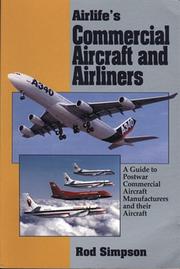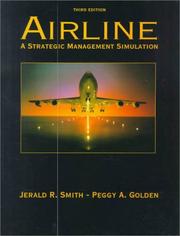| Listing 1 - 10 of 72 | << page >> |
Sort by
|
Book
Year: 2005 Publisher: Karlsruhe : KIT Scientific Publishing,
Abstract | Keywords | Export | Availability | Bookmark
 Loading...
Loading...Choose an application
- Reference Manager
- EndNote
- RefWorks (Direct export to RefWorks)
Zur Bestimmung der Anzahl und Lage von Hubstandorten sowie der Transportmengen auf einzelnen Transportrelationen wird ein Hub-Location-Problem mit Direktverkehrsrelationen und beschränkter Sortierkapazität der potentiellen Hubstandorte als gemischt binäres lineares Optimierungsproblem modelliert. Somit werden bereits in der Planungsphase die Kapazitätsrestriktionen der Hubs berücksichtigt und dadurch mögliche Kapazitätsüberlastungen der Hubs sowie die daraus resultierende Errichtung von Sekundäarhubs vermieden.Zur optimalen Lösung des Hub-Location-Problems wird ein Branch-and-Bound-Verfahren eingesetzt, für das ein effizientes Näherungsverfahren zur Bestimmung von unteren Schranken in den Knoten des Suchbaums entwickelt wird. Zur Bestimmung einer Eröffnungslösung werden die heuristischen Add- und Drop-Verfahren eingesetzt. Für die im Rahmen der Eröffnungsverfahren notwendigen Berechnungen von Allokationslösungen wird ein modifizierter Tripel-Algorithmus entwickelt. Im Verlauf des Branch-and-Bound- Verfahrens werden erstmalig logische Tests bei einem Hub-Location-Problem mit dem Ziel eingesetzt, noch freie Entscheidungsvariablen des Suchbaums vorzeitig zu fixieren.Mit Hilfe der entwickelten Verfahren werden Problemgrößen mit bis zu 100 potentiellen Hubstandorten optimal gelöst. Dies ist auf den Einsatz der logischen Tests sowie die effizient Berechnung der unteren Schranken zurückzuführen. Der Einsatz der logischen Tests bewirkt eine Reduzierung der Rechenzeit um bis zu 80%.
Book
ISBN: 1000385256 9781003152705 1003152708 9781000385250 9781000385212 1000385213 9780367715823 9780367715847 Year: 2021 Publisher: London Routledge, Taylor & Francis Group
Abstract | Keywords | Export | Availability | Bookmark
 Loading...
Loading...Choose an application
- Reference Manager
- EndNote
- RefWorks (Direct export to RefWorks)
"The COVID-19 pandemic represents an extraordinary inflection point that caught airlines worldwide unprepared, causing CEOs to recalibrate their business models. Airlines in a Post-Pandemic World explains why this unprecedented pandemic is different from the past disruptions experienced by the airline industry during the past 50 years, and what airlines and related businesses now can do to adapt to the dramatically changed marketplace. This book presents two future scenarios: continuous improvements and elastic supply. These are considered in three specific contexts for the rebuilding of the airline business. These contexts, in the order of urgency with respect to change from the status quo, are the following. The first context is for airlines to become better prepared to deal with frequent and deeper disruptions that could be localized or globalized relating to such areas as climate change, geopolitics, and cybersecurity. The second context is to collaborate and integrate within the much broader travel ecosystem, possibly using platforms to innovate on new value systems. The third context, which has always been the case and drives the first two, is for airlines to offer real solutions to people's travel needs, solutions developed with imagination and turbocharged innovation, even as we contemplate new technology airplanes and mobility as a service solutions. This book is recommended reading for all senior-level practitioners of airlines and related businesses, as well as aviation policy makers worldwide"--
Airlines --- Management. --- Air traffic
Book
ISBN: 178821384X 1788213831 Year: 2021 Publisher: Newcastle upon Tyne : Agenda Publishing Limited,
Abstract | Keywords | Export | Availability | Bookmark
 Loading...
Loading...Choose an application
- Reference Manager
- EndNote
- RefWorks (Direct export to RefWorks)
The airline industry is fundamental to the workings of the global economy. Yet, ironically for an industry of such sheer scale and economic muscle, profit margins are razor thin and many airlines struggle to break even. The precarious economics of the sector were fully revealed when Covid-19 grounded flights across the world prompting many national carriers to seek government bailouts, while smaller airlines collapsed.
In this updated and expanded new edition Volodymyr Bilotkach explains the economic realities of the airline industry and the challenges that the sector now faces after the seismic impact of the Covid-19 pandemic. The impact of such a large-scale external shock on the industry is considered across each of its sectors and for each of its primary economic determinants. The book also includes new material on changes to cost structures, the pricing of add-on services, cargo, airport slot allocation and the impact of climate change.
The book remains a comprehensive introduction to the economics of airlines, how carriers compete, how they develop their business, and how demand and cost structure, coupled with the complex regulatory regime, produces the industry we see today.
Airlines --- Economic aspects. --- Management.
Periodical
Year: 1987 Publisher: [New York, NY : East/West Network,
Abstract | Keywords | Export | Availability | Bookmark
 Loading...
Loading...Choose an application
- Reference Manager
- EndNote
- RefWorks (Direct export to RefWorks)
Airlines --- Voyages and travels --- Airlines. --- Voyages and travels.

ISBN: 1840370734 Year: 1999 Publisher: Shrewsbury : Airlife,
Abstract | Keywords | Export | Availability | Bookmark
 Loading...
Loading...Choose an application
- Reference Manager
- EndNote
- RefWorks (Direct export to RefWorks)
Transport planes. --- Aeronautics, Commercial. --- Airlines.
Book
ISBN: 3428065891 342846589X Year: 2022 Volume: vol 183 Publisher: Berlin : Duncker & Humblot,
Abstract | Keywords | Export | Availability | Bookmark
 Loading...
Loading...Choose an application
- Reference Manager
- EndNote
- RefWorks (Direct export to RefWorks)
Aeronautics, Commercial --- Airlines --- Competition --- Government policy
Book
ISBN: 1000034020 3731500035 Year: 2013 Publisher: KIT Scientific Publishing
Abstract | Keywords | Export | Availability | Bookmark
 Loading...
Loading...Choose an application
- Reference Manager
- EndNote
- RefWorks (Direct export to RefWorks)
This book studies air cargo capacity control problems. The focus is on analyzing decision models with intuitive optimal decisions as well as on developing efficient heuristics and bounds. Three different models are studied: First, a model for steering the availability of cargo space on single legs. Second, a model that simultaneously optimizes the availability of both seats and cargo capacity. Third, a decision model that controls the availability of cargo capacity on a network of flights.
Cargo --- Airlines --- Capacity Control --- Revenue Management

ISBN: 0131058754 9780131058750 Year: 1994 Publisher: Englewood Cliffs, NJ : Prentice Hall,
Abstract | Keywords | Export | Availability | Bookmark
 Loading...
Loading...Choose an application
- Reference Manager
- EndNote
- RefWorks (Direct export to RefWorks)
Strategic planning --- Management --- Airlines --- Simulation methods.
Dissertation
Abstract | Keywords | Export | Availability | Bookmark
 Loading...
Loading...Choose an application
- Reference Manager
- EndNote
- RefWorks (Direct export to RefWorks)
brussels airlines --- identité visuelle --- marque --- brussels airlines --- identité visuelle --- communication externe --- marque
Periodical
Abstract | Keywords | Export | Availability | Bookmark
 Loading...
Loading...Choose an application
- Reference Manager
- EndNote
- RefWorks (Direct export to RefWorks)
Airlines --- Aeronautics, Commercial --- Aeronautics, Commercial --- Airlines --- Air services --- Finance --- Finance --- Finance. --- Finance. --- Air services --- Finance --- Serials
| Listing 1 - 10 of 72 | << page >> |
Sort by
|

 Search
Search Feedback
Feedback About UniCat
About UniCat  Help
Help News
News